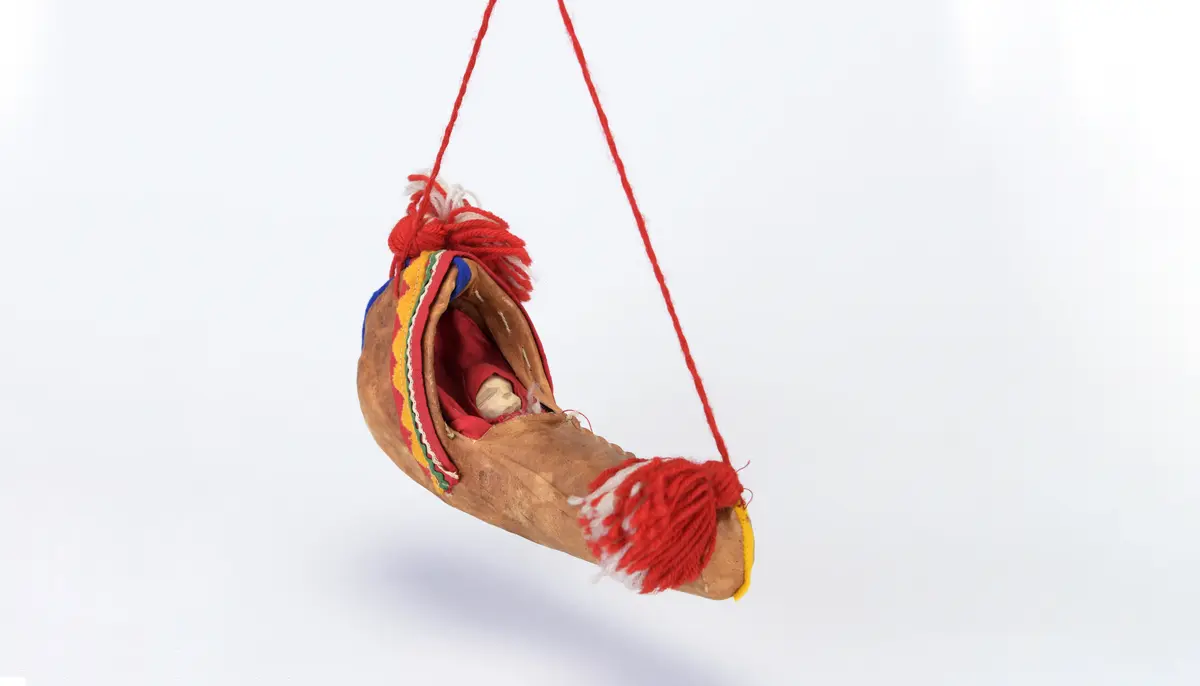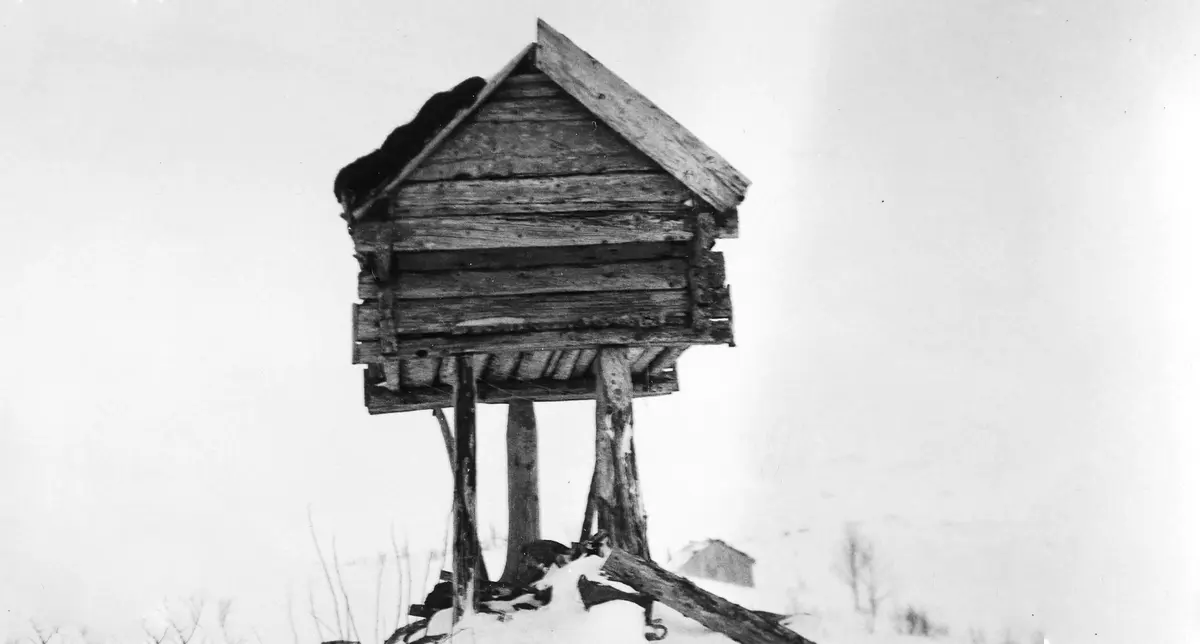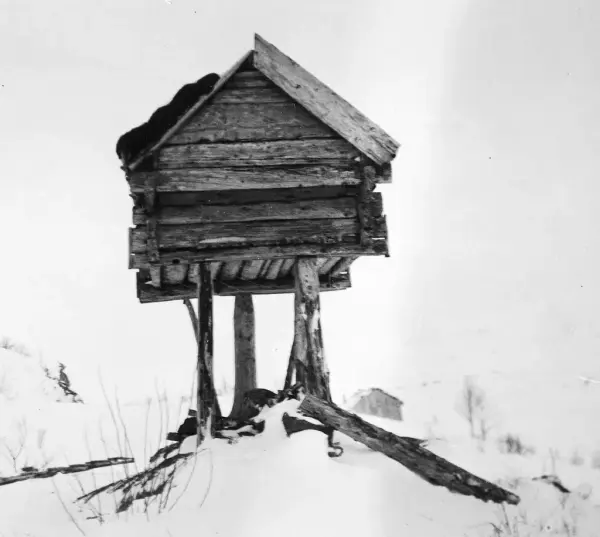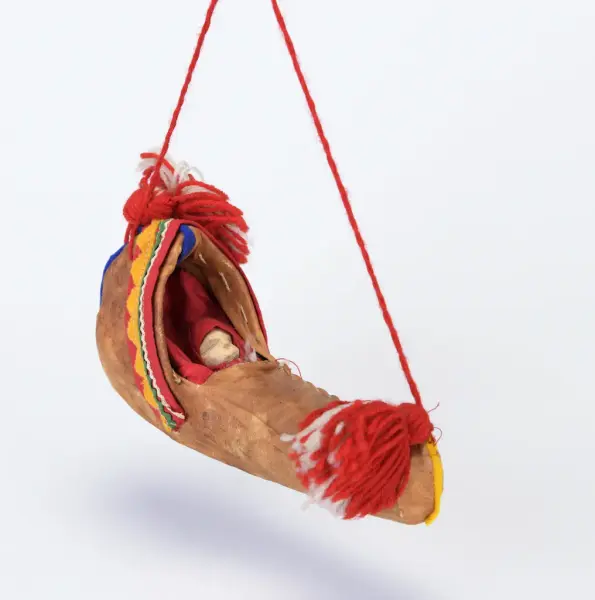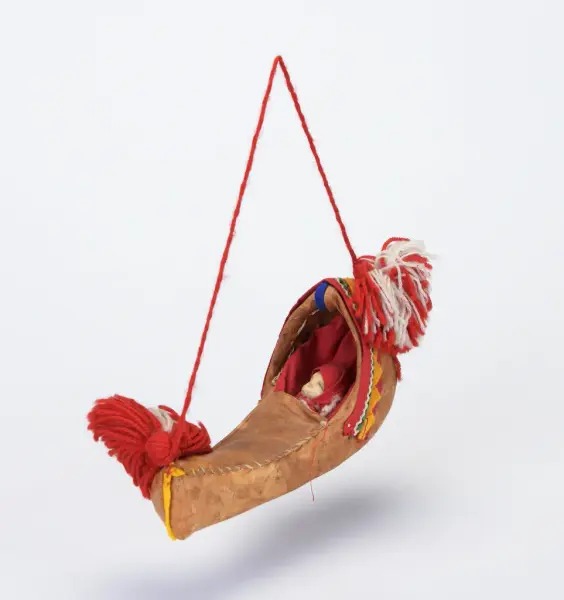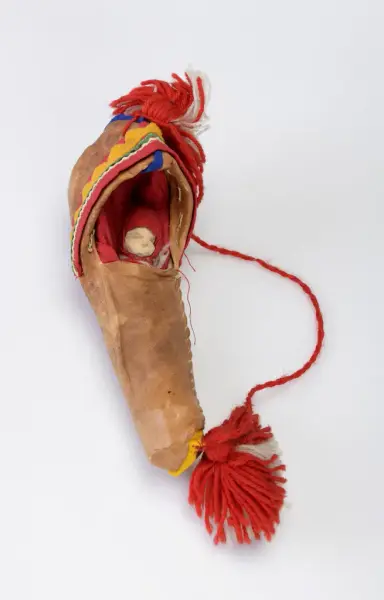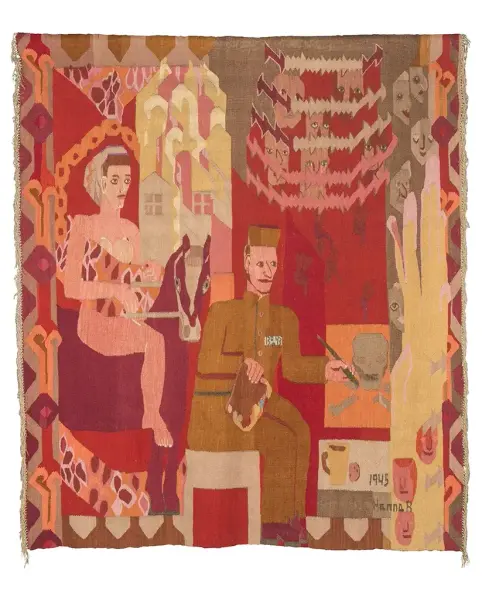Unknown Authors
Buvrie (Sámi storehouse at Langvatnet, Verrafjellene, Nord-Trøndelag. Later rebuilt at Sverresborg Trøndelag Folk Museum; photo by Tiller S.), 1935
From the collection of the Sverresborg Trøndelag Folkemuseum
Sámi toy (cradle); wood, reindeer skin, wool yarn, wool fabric, plastic, silk ribbon; 7,5x19x11.5 cm, sixties
From the collection of the Sverresborg Trøndelag Folkemuseum
According to its self-presentation, Sverresborg Trøndelag Folkemuseum, is Norway’s first museum, founded in 1909 by “a group of enthusiastic citizens from Trondheim who wanted to preserve old and distinct buildings in the city.” The location around the ruins of King Sverre’s medieval castle has been in use since 1914, and today the museum’s holdings span more than 28 hectares. The cultural history collection includes over 300,000 artifacts, 5,000 of which are available for public viewing.
Out of those 300,000 objects, 102,000 have been digitized. Among them, 218 items can be found under the search term “Sámisk” on the museum's webpage at digitalmuseum.no. For Passing Motherhood, we chose two: a wooden Sámi doll swaddled in deer skin and a photograph from 1935 of a Sámi storehouse on pillars, a buvrie, from Langvatnet, Verrafjellene, Nord-Trøndelag, photographed before being disassembled and reinstalled on-site at the museum. This choice engages with institutional perspectives on heritage preservation, aims to remind of Trøndelag territory as a Southern Sámi land, and critically revisits the presence and varied labeling of duodji in museum collections as crafts/arts/archives/ethnography/design.
Originally established as a grassroots initiative, Sverresborg Trøndelag Folkemuseum has expanded its collection primarily through donations. However, grassroots does not necessarily ensure ethical practices: when investigating the provenance of the Sámi objects in the collection, we found that they are registered as belonging to / being acquired by Norwegians and thus attributed to them rather than their Sámi creators. As an example of a common trope in the history of indexical media, the photograph of a Sámi buvrie is credited to the museum inspector Sigurd Tiller who photographed the house, without any mention of the Sámi families that utilized it during the seasonal migrations.
The provenance information available to the public is limited, yet provides clues for interpretation. We can see that of the two hand-made Sámi dolls in Sverresborg’s collection, one belonged to the daughter of (supposed wealthy) Trøndelag parents who donated hundreds of toys to the museum; the other was brought to children “when their father came home from seasonal work in Finnmark in the '60s”. From the 19th century onwards, the adaptation of crafts by Indigenous peoples for the production of souvenirs for settler populations can be seen as a common form of forced participation in the economic realities of the nation-state and its craving for exotic curiosities.
German philosopher Walter Benjamin — an important voice in the era of modernity responsible for the maturation of the museum as an institution — considered every collector as engaging in a form of grasping history; struggling against dispersion. Elevated to the institutional level, what kinds of history do contemporary museums perpetuate? What dispersions are they resisting but their own? How can museums’ decisions lead to more permanent, structural changes in their operations? Every museum with a significant collection must make an economic, inwardly political choice: to what extent should resources be invested in preserving the physical state of the objects in their care as a primary goal, and what hidden narratives should be exposed by the very existence of those objects within the institution and public?
We will never know the name of the child this Sámi wooden toy was originally made for, or the name of the deer whose skin was used to sew this small blanket. Yet, this absence ought to be made visible, and the not-knowing situated with care similar to the attention with which the little doll’s face was carved.
- Yaniya Mikhalina
Production credits
Thank you Sverresborg Trøndelag Folkemuseum.
